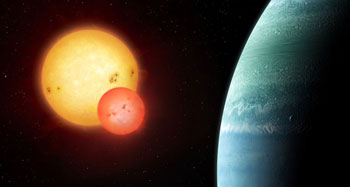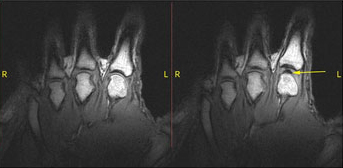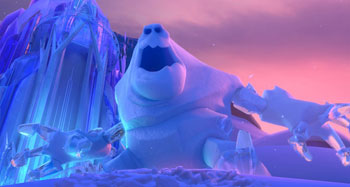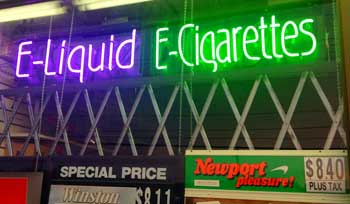The most popular stories of 2015
From stress to knuckle cracking, what our readers loved

Check out what readers loved in 2015.
S. Egts/SSP
In 2015, scientists sent a probe buzzing past Pluto. They used gene editing to make beagles buff. They even brought back the brontosaurus.
All those stories made a big science splash. But when it comes to what our readers prefer, it tends to be science that’s a little closer to home — with people and their health in the top spots. From early school starts to why our knuckles crack, here are the 10 most popular science stories of the year.
10. The planet with two suns

9. Turning stress into success
With tests, competitions, work and more, it’s no wonder that people of all ages feel anxiety. But research has identified ways for teens to help deal with stress and fear. And a new study showed that sometimes, turning stress into success is really just about your perspective.
8. The stressed out brain
Some people think that tough times build character. Whether or not that’s true, a study this year showed that stressful childhoods can change the brain — in ways that last for years. Boys who experienced stress before age six were more likely to be depressed later in life. They also had changes in parts of their brains related to processing harsh life experiences. The scientists explain that talking to others about tough times might help to ease the stress.
7. Why knuckles crack

6. Stephen Hawking solves his own problem
What happens to the objects that fall into a black hole? The famous physicist Stephen Hawking described how the energy in a black hole slowly leaks away. But what about the information about the matter that fell inside? Hawking posed this question. In 2015, he headed a small team that also proposed the answer. The information about matter falling into a black hole, he argues, is stored around the edges, in an area called the event horizon.
5. Silver-screen science

4. Hooked on phones
Most of us probably don’t think about how often we look at our smartphones. But maybe we should. The average college student uses a smartphone for 9 hours a day — more time than he or she will spend sleeping. Could our phone habits be addictive? A new study says yes. And there’s a price for that. People who spend too much time on their screens can show anxiety when their phones are gone.
3. Early school starts make for sleepy students
Why do teens stay up so late? Their body clocks shift in adolescence — and not by choice. So teens stay up later and prefer to sleep in. When they don’t, they can suffer physical problems and have trouble learning. Yet new data show that at least in the United States, most middle- and high-school students don’t get enough sleep. The problem: to make it to school on time, many must set their alarm clocks to get up as early as 5:30 a.m. Scientists are now calling for schools to start later, so tweens and teens not only can get the sleep they need — but also perform better.
2. Global warming beliefs are a matter of education and wealth
Most scientists agree: Earth’s climate is changing, and humans are playing a critical role. But a 2015 study showed that what people think about global warming — or whether they even know about it — depends on where they live, their education and their wealth. Those who know about it in poorer countries tend to view it as much more of a menace. Knowing what people believe about climate change could help scientists and governments motivate people to take action against the threat.
1. Damaging chemicals in e-cigs

Power Words
(for more about Power Words, click here)
addiction The uncontrolled use of a habit-forming drug or uncontrolled and unhealthy habit (such as video game playing or phone texting). It results from an illness triggered by brain changes that occur after using some drugs or engaging in some extremely pleasurable activities. People with an addiction will feel a compelling need to use a drug (which can be alcohol, the nicotine in tobacco, a prescription drug or an illegal chemical such as cocaine or heroin), even when the user knows that doing so risks severe health or legal consequences. (For instance, even though 35 million Americans try to quit smoking each year, fewer than 15 out of 100 succeed. Most begin smoking again within a week, according to the National Institute on Drug Abuse.)
black hole A region of space having a gravitational field so intense that no matter or radiation (including light) can escape.
brontosaurus A dinosaur whose name means “thunder lizard.” It has a long neck and a whip-like tail. It lived during the Jurassic period, about 150 million years ago. Scientists used to think that Brontosaurus and Apatosaurus were the same species. But in 2015, paleontologists said they believed the two animals were different species after all.
climate change Long-term, significant change in the climate of Earth. It can happen naturally or in response to human activities, including the burning of fossil fuels and clearing of forests.
e-cigarette (short for electronic cigarette) Battery-powered devices that disperse nicotine and other chemicals as tiny airborne particles that users can inhale. They were originally developed as a safer alternative to cigarettes that users could use as they tried to slowly break their addiction to the nicotine in tobacco products.
gene (adj. genetic) A segment of DNA that codes, or holds instructions, for producing a protein. Offspring inherit genes from their parents. Genes influence how an organism looks and behaves.
nicotine A colorless, oily chemical produced in tobacco and certain other plants. It creates the ‘buzz’ effect associated with smoking. It also is highly addictive, making it hard for smokers to give us their use of cigarettes. The chemical is also a poison, sometimes used as a pesticide to kill insects and even some invasive snakes or frogs.
Pluto A dwarf planet that is located in the Kuiper Belt, just beyond Neptune. Pluto is the tenth largest object orbiting the sun.
smartphone A cell (or mobile) phone that can perform a host of functions, including search for information on the Internet.







